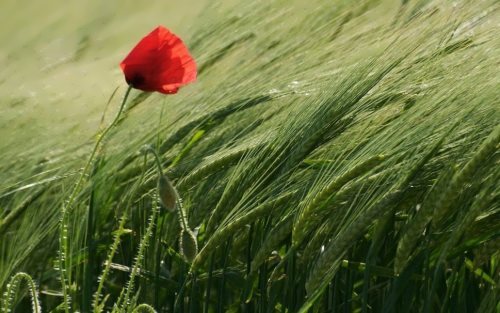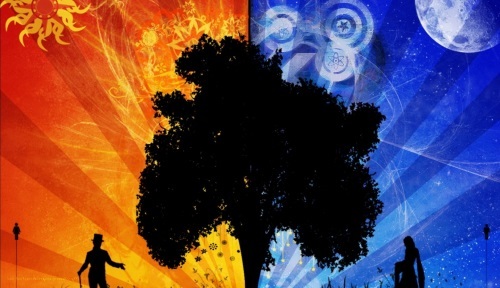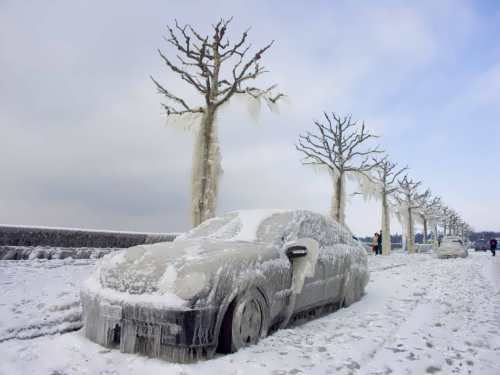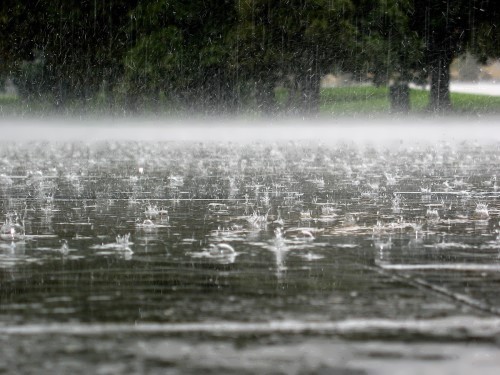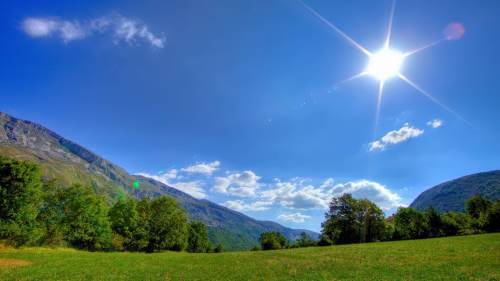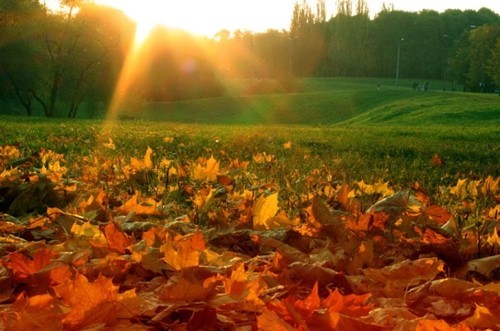What makes the weather?
Weather is simply what the air or atmosphere is like at any time. Weather may be any combination of different amounts of heat, moisture, and motion in the air. And it changes from hour to hour, day to day, season to season, and even from year to year.
Heat causes the winds as well as different way in which water vapour appears in the atmosphere.
Humidity, the amount of water vapour in the air, combined with the temperature, causes many weather conditions. Clouds are a kind of weather condition, and they are formed when water vapour condenses high above the ground. When the cloud droplets grow larger and become too heavy to be held up by the air currents, they fall to the ground and we have the weather known as rain. If the raindrops fall through a layer of air which is below freezing, the drops freeze and our weather is snow.
What makes wind?
A wind is simply the motion of air over the earth and all winds are caused by one thing – a change in temperature. Whenever air is heated it expands. This makes it lighter, and lighter air rises. As the warm air rises, cooler air flows in to take its place. And this movement of air is wind!
There are two kinds of winds, those that are part of a worldwide system of winds, and local winds. The major wind systems of the world begin at the equator, where the sun’s heat is greatest. Here the heat rises to high altitudes and is pushed off toward the North and South poles. When it has journeyed about one-third of the distance to the poles, it has cooled and begins to fall back to earth.
But these world-wide winds are often broken up by local winds which blow from different directions. Local winds may be caused by the coming of cold air masses with high pressure, or warmer air masses with low pressure.
What causes hail?
Hailstorm is one of the most unusual weather conditions. It usually occurs during the warm weather and is accompanied in many cases by thunder, lightning, and rain. Hail is formed when raindrops freeze while passing through a belt of cold air on their way to earth.
The hailstones are frequently made up of layers of ice and snow.
Frozen rain is sometimes called hail, but it is really “sleet”!
Where does one day change to another?
There are places in the world where it suddenly becomes tomorrow or yesterday if you cross an imaginary line. This line is drawn on maps and is called the International Date Line. It runs through the Pacific Ocean from north to south. On the eastern side of the line, the time is always 24 hours behind the time of the western side. When you cross the line in an aircraft or aboard ship, you immediately gain or lose a day.
Thunder and lightning
Lightning is electricity in the air which jumps from one place to another – from cloud to cloud or from a cloud to the ground. Lightning warms the air through which it goes. This makes the big noise that is thunder.
Light travels very quickly. It can go round the world seven times in one second, so lightning reaches your eyes instantly. The sound of thunder, though, is very much slower. It travels only one mile in five seconds.
Guinness Records
– Smallest temperature range
From 1927-35, the lowest temperature recorded at Garapan on Saipain in the North Mariana Islands, was 19.6° C. The highest was 31.4°C, giving an extreme range of 11.8°C.
– Greatest temperature range
Temperatures in Verkhoyansk, Siberia have ranged 1 050С from -68°C to 37°C.
The greatest temperature variation recorded in 24 hours is 56°C, in a fall from 7°C to -49°C at Browning, Montana, USA on 23-24 January 1916.
– Hottest place
In 1960-66, the average max temperature at Dallol, Ethiopia was 34°C.
In Death Valley, California, USA, maximum temperatures in excess of 49° С were recorded on 43 consecutive days between 6 July and 17 August 1917.
Marble Bar, Western Australia, has had a maximum temperature of 49.2 °C.
– Lowest temperature
On 21 July 1983, a record low temperature of – 89.2° С was registered in Vostok, Antarctica, at an altitude of 3,420m.
The coldest permanently inhabited place in the world is the Siberian village of Oymyakon in Russia, at an altitude of 700m. The temperature reached -68°C in 1933. More recently, an unofficial report cited a new low of -72° C.
Polyus Nedostupnosti or “Pole of Inaccessibility” in Antarctica is the coldest location in the world, with an extrapolated annual mean of -58°C.
– Most sunshine
The annual average at Yuma, Arizona, USA, is 4,055 out of 4,456 possible hours of sun.
– Highest Rainfall
A record 1,870 mm of rain fell within a 24-hour period at Cilaos, Reunion island, on 15 and 16 March 1952. The altitude was 1,200m. This figure is equivalent to 3,047 tonnes of rain per ha.
– Longest drought
The Atacama Desert in northern Chile experiences virtually no rain, although on several occasions during a century a squall will strike a small area.
– Longest-lasting rainbow
A rainbow was visible for six hours over Sheffield, S Yorkshire, UK, on 14 March 1 994, from 9 a.m. to 3 p.m.
– Windiest place
Gales in Commonwealth Bay, Antarctica, can reach a speed of 320km/h.
– Highest surface wind speed
A record surface wind speed of 371 km/h was recorded at Mt Washington, New Hampshire, USA, on 12 April 1934.
– Thunder
In Tororo, Uganda, an average of 251 days of thunder per year was recorded between 1967 and 1976.
– Heaviest hailstones
Hailstones weighing up to 1 kg fell in Gopalganj district, Bangladesh, in 1986.
What makes the weather?
Weather wits
– Horses run fast before a violent storm or before windy conditions.
– Pigs gather leaves and straw before a storm.
– Ants are busy, gnats bite, crickets sing louder than usual, spiders come down from their webs, and flies gather in houses just before rain and possible severe storms.
– Evening red and morning gray are sure signs of a fine day.
– Evening gray and morning red, put on your hat or you’ll wet your head.
– If autumn leaves are slow to fall, prepare for a cold winter.
– A warm Christmas – a cold Easter.
– The first frost in autumn will be exactly six months after the first thunderstorm of the spring.
– If the moon rises clear, expect fair weather.
– When dew is on the grass, rain will never come to pass.
– Fish bite best before a rain.
– Dandelion blossoms close before a rain.
– When mountains and cliffs in the clouds appear, some sudden and violent showers appear.
– The higher the clouds, the fairer the weather.
I wish you sunny weather and cloudless sky in your life!

